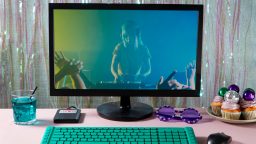Choosing the right laptop can be a daunting task, especially with so many options available. Whether you’re looking for a machine for work, school, gaming, or general use, selecting the right laptop depends on understanding your specific needs. With the right information, you can make a more informed decision and find a laptop that suits both your budget and requirements. Here’s a simple guide to help you choose the perfect laptop for your needs.
- Determine Your Primary Use
The first step in choosing the right laptop is identifying how you plan to use it. Laptops come in a variety of specifications tailored to different needs. Here’s a breakdown based on common use cases:
- General Use: If you’re using your laptop for basic tasks such as web browsing, emailing, or streaming videos, a mid-range laptop with standard specs will suffice. Look for a laptop with an Intel Core i5 or AMD Ryzen 5 processor, 8GB of RAM, and at least 256GB of storage.
- Work and Productivity: For office tasks, presentations, and heavy multitasking, opt for a laptop with a more powerful processor (such as an Intel Core i7 or AMD Ryzen 7) and 16GB of RAM. A larger storage option, like a 512GB SSD, will also improve speed and responsiveness.
- Gaming: Gaming laptops require more robust specifications, including a powerful graphics card (GPU), like the NVIDIA GeForce GTX or RTX series, and a high refresh rate screen. Look for at least 16GB of RAM and a powerful Intel Core i7 or AMD Ryzen 7 processor. A laptop with a dedicated GPU will be able to handle demanding games and graphics-intensive applications.
- Creative Professionals: If you’re into video editing, graphic design, or 3D rendering, you’ll need a laptop with high-end specifications. A powerful CPU (Core i9 or Ryzen 9), dedicated GPU, and at least 16GB of RAM are a must. Additionally, a high-resolution screen (preferably with accurate colour reproduction, such as an IPS display) is essential for creative tasks.
- Consider Screen Size and Portability
Laptops come in various screen sizes, typically ranging from 11 to 17 inches. The size you choose should depend on how portable you need your laptop to be and how large you want the screen to be for your tasks:
- Compact (11–13 inches): If portability is a priority, smaller laptops are the best choice. They are lightweight, easy to carry, and ideal for working on the go. These are perfect for general use, students, and professionals who travel frequently.
- Mid-Size (14–15 inches): If you need a balance between portability and screen size, a 14- or 15-inch laptop is the ideal choice. These laptops are lightweight enough for portability, but the larger screen provides more space for multitasking and productivity.
- Large (16–17 inches): For users who need a large screen for tasks like video editing or gaming, a laptop with a 16–17-inch display is ideal. These laptops are heavier and less portable, but they provide ample screen real estate for multitasking and immersive gaming.
- Battery Life
Battery life is another crucial consideration, particularly for those who work remotely or need a laptop for travel. A longer battery life ensures that you can work for hours without needing to plug in. Most modern laptops offer anywhere between 6 to 12 hours of battery life on a full charge, but this can vary based on the laptop’s specifications and usage.
- For everyday use, 8 hours of battery life is usually sufficient.
- For gaming laptops, battery life tends to be shorter due to the high-power components.
- For professionals on the go, look for a laptop that offers at least 10–12 hours of battery life, especially if you’ll be using it for long meetings or flights.
- Operating System (OS)
The operating system you choose plays a major role in how you’ll interact with your laptop. There are three main operating systems to consider:
- Windows: The most popular and versatile OS for laptops, Windows supports a wide range of applications and software. It’s ideal for business users, gamers, and anyone who needs access to a large library of programs.
- macOS: Apple’s macOS is known for its sleek design and user-friendly interface. It’s ideal for creative professionals who use design, video editing, and music production software. MacBooks are known for their durability, but they tend to be more expensive than their Windows counterparts.
- Chrome OS: If you primarily use web-based applications and need a budget-friendly option, a laptop with Chrome OS might be a good fit. Chromebooks are lightweight, fast, and affordable but are best suited for light work, such as email, web browsing, and word processing.
- Storage: SSD vs HDD
When it comes to storage, there are two main types of drives: Solid-State Drives (SSD) and Hard Disk Drives (HDD).
- SSD: An SSD is faster, more durable, and uses less power than an HDD. It can significantly improve boot times, app load times, and overall system performance. For most users, an SSD is the better option, especially if you’re using the laptop for work or multitasking.
- HDD: While slower than SSDs, HDDs are cheaper and offer more storage space. If you need a lot of storage for files like videos or photos and don’t mind slower speeds, an HDD may be the right choice. However, many laptops now come with a combination of SSD and HDD for the best of both worlds.
- Budget
Your budget will play a major role in narrowing down your options. Laptops are available at a wide range of prices, and finding the right balance between cost and features is key.
- Budget Laptops: Expect to spend anywhere from £300 to £600 for basic laptops suitable for light use like browsing, email, and document editing.
- Mid-Range Laptops: If you need a laptop for more demanding tasks like work or light gaming, expect to spend between £600 and £1,200. These laptops offer better performance, screen quality, and build.
- High-End Laptops: For power users, gamers, or creative professionals, high-end laptops can cost upwards of £1,200, with some even exceeding £2,000. These laptops offer top-tier performance, premium materials, and enhanced features.
Conclusion
Choosing the perfect laptop for your needs involves evaluating your primary use, desired features, and budget. Whether you’re looking for a compact machine for travel or a powerful laptop for gaming or creative work, the key is to match the laptop’s specifications to your tasks. By carefully considering factors like screen size, storage, battery life, and operating system, you can find a laptop that will serve you well for years to come. Happy laptop shopping!





